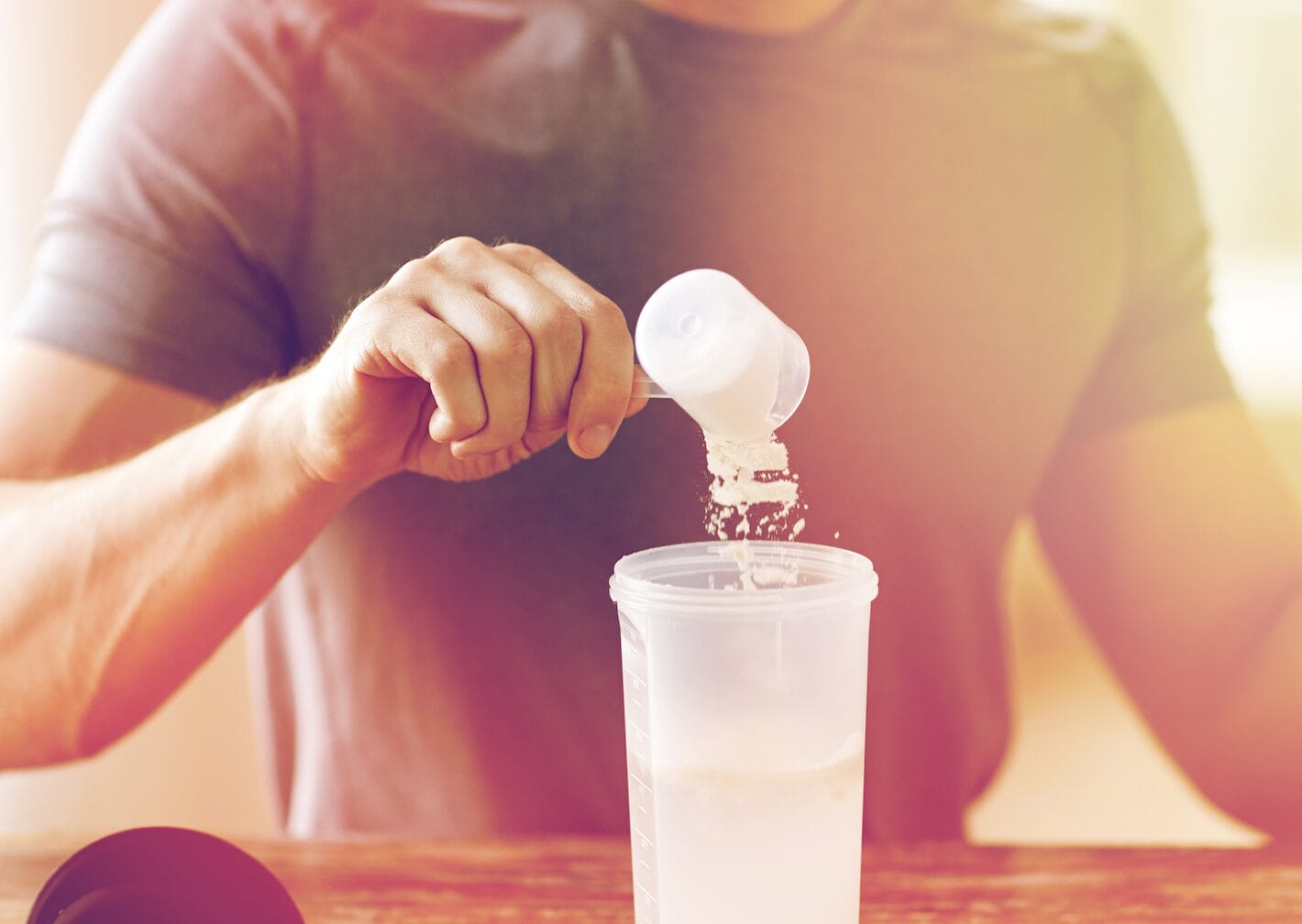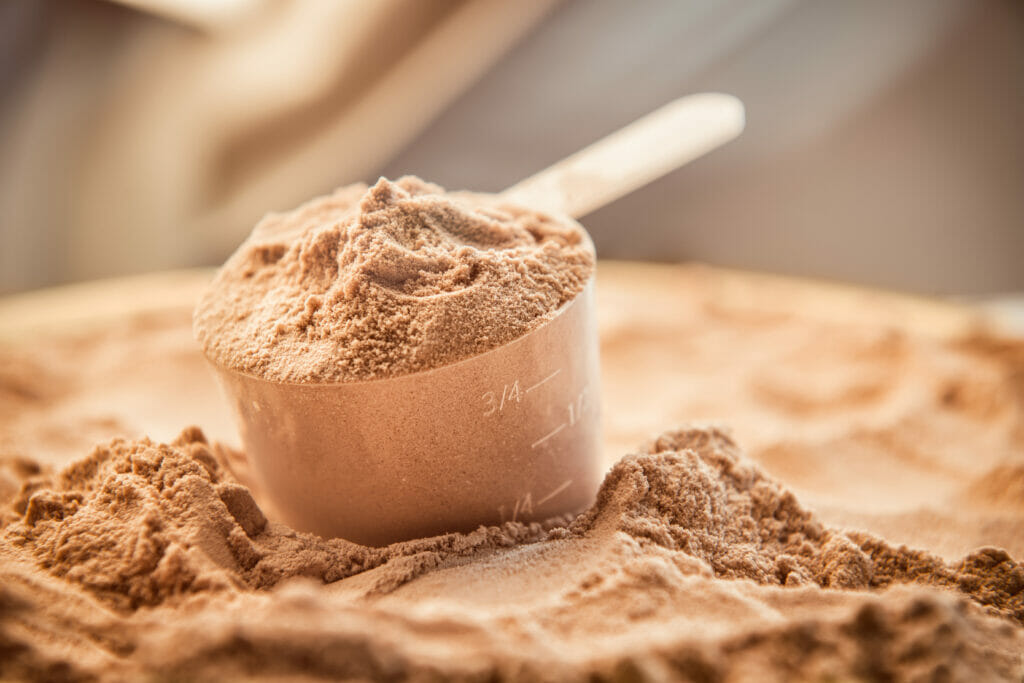
LyfeFuel’s Recovery Shake is a plant-based protein shake designed to help replenish nutrients and minerals, as well as build lean muscle tissue following hard workouts.
In other words, recover in the most optimal way possible, so you feel better, train harder, and ultimately make better gains.
When it comes to nutritional stats, LyfeFuel’s Recovery Shake has a lot to be proud of. Among a lot of other things, each serving provides 25 g of protein, 4.5 g of BCAAs, 2 g of sugar, and packs only 140 calories.
And with 25 whole food ingredients, it’s also a great source of many different vitamins and minerals.
It’s also completely vegan, organic, and free of many other allergens, making it accessible to folks of varying dietary needs.
And, perhaps most importantly, it tastes pretty good.
So, if you’re looking for a plant based recovery shake, I think LyfeFuel could make a great choice, but before you decide, you need to know exactly what you’re getting here.
And that’s where I can help.
In this review, I’ll go over everything this Recovery Shake has to offer, including my personal take on how it tastes and mixes.
After reading, you’ll know whether or not this is the right protein shake to meet your needs.
Disclosure: the good people at LyfeFuel were kind enough to send me a free sample for this review. I wasn’t compensated in any other way and this review is based solely on my personal experience with this product. That said, if you decide to make a purchase through my links on this site, I will make a commission based on that sale as an affiliate.
The LyfeFuel Recovery Shake
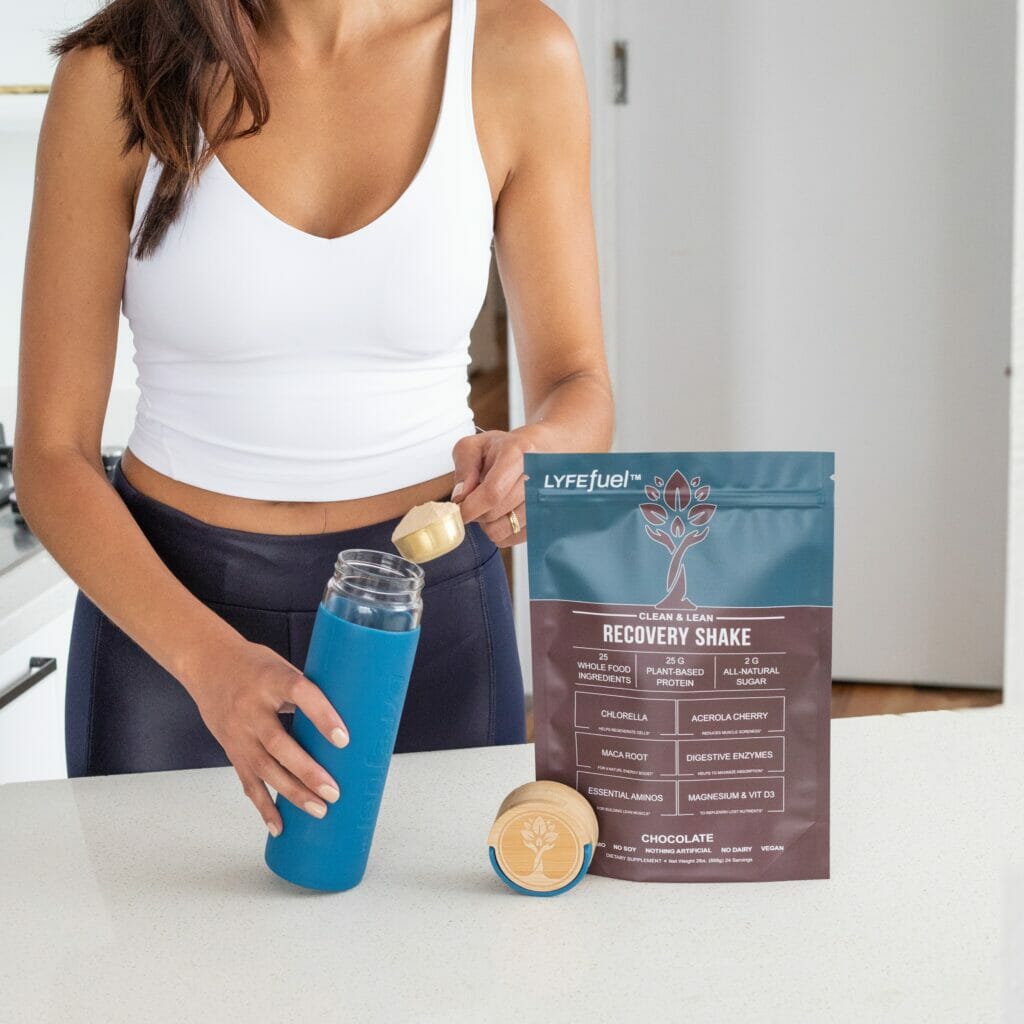
LyfeFuel is a USA based company and the majority of the ingredients used in their products are grown in the USA (minus some of the more exotic foods that are imported).
The meat and potatoes of their lineup are the protein shake blends, but they also offer some protein bars, herbal supplements, and cool water bottles to choose from.
The Recovery Shake we’re here to discuss now is completely plant based, so you won’t find any dairy or other animal products in it.
This means LyfeFuel can fit nicely into vegan and vegetarian lifestyles.
Anyway, let’s start things off with a rundown of what’s actually in this stuff.
Pros
- Whole food, plant based
- Non GMO
- Vegan
- 25 g protein/serving
- Only 140 calories/serving
- Only 2 g sugar/serving
- Low fat
- No artificial sweeteners, flavors, or dyes
- 4.5 g of BCAAs
- Mixes well
- Not too sweet
- Tastes good
- Affordable
Cons
- Very powdery, can be messy
Ingredients
I’m not going to list every single food and ingredient used to produce this protein powder here because you can easily find this info on their website and make what you will of it.
What I will do though, is hit the major points.
LyfeFuel’s Recovery Shake has ingredients in it from 25 different whole food plants and they can be organized into several different categories.
Protein Blend
The protein in this protein shake comes from sprouted brown rice, Canadian yellow peas, and quinoa.
This is undeniably plant based, but you’ll also notice that they don’t use soy protein here, so if you have soy allergies, LyfeFuel can still work.
The Recovery Shake packs 25 g of protein per serving.
Greens Blend
There are ingredients from 9 or so different green plants in this blend, including stuff we all recognize like kale, oat grass, and lemon, but there’s also several green plants a lot of us might not be familiar with.
Like chlorella and spirulina, which are types of green algae that are supposedly full of anti-oxidants and other good nutrients.
In general, the greens blend is meant to boost immunity over time – always a good thing.
Super Berry Blend
LyfeFuel’s Recovery Shake includes a lot of exotic berries (11 to more exact), most of which I’ve never heard of before.
There are some of the tried and true classics in there, like cranberries, strawberries, and pomegranate, but there are also several South American and Asian berries, like maqui, jabutica, and mangosteen.
The possible benefits of each fruit might vary a little, but they’re all high in vitamins and antioxidants, which could help with cellular repair following workouts, as well as boost your immune system.
Micronutrients
This shake includes a nice dose of micronutrients, like vitamin A, C, D3, magnesium, iron, potassium, and more.
These micronutrients come from fruits and vegetables, including banana, carrots, oranges, spinach, as well as others.
These vitamins and whatnot were included to aid in muscle recovery and help manage fatigue.
Branched Chain Amino Acids (BCAAs)
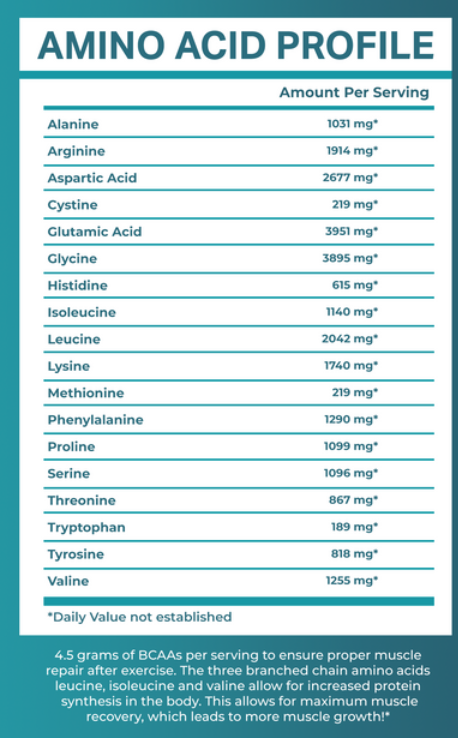
Each serving of LyfeFuel’s Recovery Shake includes 4.5 g of BCAAs.
If you’re unfamiliar with BCAAs, you probably aren’t alone – plus they’re kind of confusing anyway.
The way I understand it, is that they’re basically just a specific type of protein.
Keep in mind that all protein is made out of amino acids, but it turns out not all protein is used by the body to build muscle – only certain amino acids are specifically designed for this.
And you guessed it, these specific muscle building acids are referred to as BCAAs.
The 3 amino acids known mostly for their muscle building qualities are leucine, isoleucine, and valine, all of which are included in this blend.
The inclusion of these specific BCAAs in this shake is to help with muscle growth and repair following workouts (for more info about BCAAs, check out this helpful article).
Maca Root
Maca root, aka “Peruvian ginseng” is a vegetable found in the Andes mountains. It’s been used for thousands of years for all kinds of things, but these days, it’s used mostly to help boost energy naturally.
It’s also full of vitamins and minerals, including iron, potassium, and calcium.
Digestive Blend
And finally, LyfeFuel added a few ingredients to supposedly help with digestion and nutrient absorption, including papain (from papaya), protease (from mushrooms), and amylase.
These ingredients may help your body make the most of all the other vitamins and nutrients this shake has to offer.
Nutritional Stats
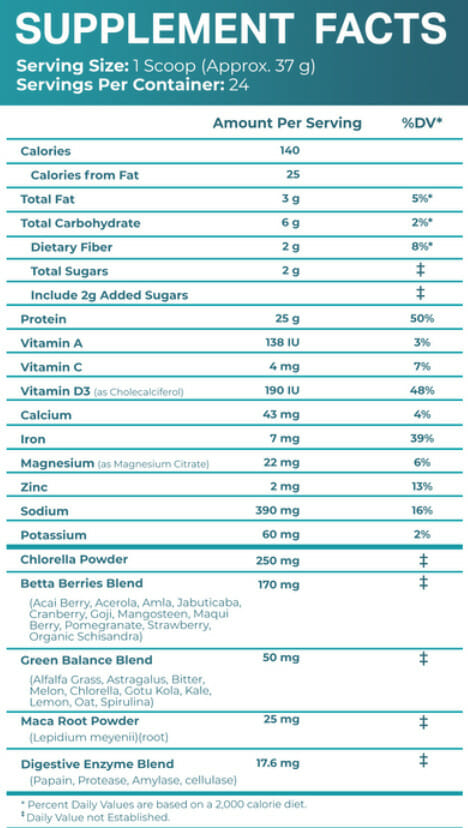
Ok, so this Recovery Shake has a lot of impressive fruits and vegetables in it and it would make sense that these ingredients would have at least some health benefits, but that’s not really my place to say.
I’m not checking research studies and assessing the FDA’s perspective for all those ingredients to determine whether or not they actually do what they supposedly do.
I’m also not a dietician or nutritionist, so I’m certainly not a professional when it comes to food or ingredients.
So, it’s really up to each of us to make our own decisions regarding whether or not those above ingredients have any merit.
Moving on though, let’s take a look at the nutritional stats this Recovery Shake is packin’.
Again, I’m not going to go down this list item for item because I think that would be a waste of time – you can easily check this out for yourselves and make your own conclusions.
But I do want to point out a few key observations.
First, I’d like to point out that this shake is only 150 calories per serving, so if you’re trying to cut calories for weight loss purposes, you can mix this shake with water and have a very low calorie meal.
It’s also quite low in fat and added sugars, again making it a solid choice for folks trying to watch their intake of these substances.
Personally, I know I could be doing a much better job of watching my sugar intake, but that’s a story for another day.
The 25 g of protein is pretty impressive for a plant based protein shake and you can see the daily value percentages for the various vitamins and minerals.
Most notably, this shake contains a decent serving of iron and vitamin D3 and isn’t awfully high in sodium.
Taste
Ok, I realize so far I haven’t really offered anything that you couldn’t see for yourself by simply looking at the back of the package, but now that we’ve gotten through all the objective stuff, it’s time to get to one of the most important considerations – taste.
And since I’ve had the opportunity to try this Recovery Shake, this is something I can speak to first hand.
The Recovery Shake comes in 2 flavors, vanilla and chocolate and I sampled the chocolate flavor.
Overall, I think it tastes quite good, especially if you don’t like overly sweet drinks (which, as an unsweetened tea drinker, is a category I certainly fall into).
LyfeFuel’s Recovery Shake has a mild chocolate flavor and isn’t very sweet, which I found to be very drinkable.
I first tried it by simply mixing a scoop of the powder with a full glass of water and then I mixed a shake with it in the blender with almond milk, ice, and a tablespoon of almond butter.
I was pleasantly surprised by the flavor in just water – the powder itself mixes very easily and offers a creamier texture than I’d expect with just water.
I will say that the powder itself is very dry and “powdery”, so you have to be careful taking the scoop out of the bag – this stuff can easily go everywhere.
But this light, dry texture does make it very mixable in the water (unlike a lot of other protein powders I’ve tried).
Anyway, mixing it with water was fine, but blending it with almond milk and almond butter was quite delicious.
Adding these other ingredients certainly adds more calories and fat, but if you’re looking to make more a meal out of your recovery shake, I highly recommend it.
Overall, I enjoy the way LyfeFuel tastes and appreciate the subtle chocolatey flavor.
Cost
Let’s talk dineros.
As I’m writing this, a 2 lb bag of LyfeFuel’s Recovery Shake is selling for $50 – or you can subscribe for a monthly refill and get it for $40/bag.
Each 2 lb bag contains 24 servings, so at full price, that’s about $2.08 per serving.
At first glance, that seems pretty reasonable to me, but we can get a better idea by looking at some of the other vegan protein shakes on the market for comparison.
At the higher-end, there’s Ka’Chava, which goes for $4.66/serving at full price; there’s also OWYN, which costs $2.14 per serving.
There’s also Orgain’s Vegan Protein Powders, which I’ve used in the past and taste really good too – the cost varies a little depending on size and flavor, but can cost somewhere around $1.67/serving when purchased through Amazon.
And there are a ton of other vegan protein powders out there, but based on the examples mentioned above, I think LyfeFuel is priced reasonably.
Especially considering everything is whole food based and free from the top allergens.
Final Thoughts
Ok, I think that about does it.
I always struggle a little when reviewing food products because I never quite know how I want to organize my thoughts, especially for a protein shake like this where so much of the info is simply based on reading the ingredients and interpreting on your own.
But that said, I hope you still found this review at least a little helpful.
Overall, I really like LyfeFuel’s Recovery Shake.
I think it tastes great and I’m really impressed with how well it mixes by simply adding it to a glass of water and mixing with a spoon.
And all of the plant based ingredients sound great to me.
I also think this shake is well-priced, considering how much some of the other vegan blends cost.
Personally, I’m not vegetarian or vegan, but I’m determined to start incorporating more plant based foods in my diet and I could see this Recovery Shake helping toward this goal.
The only real downside I see here is that it can get a little messy if you’re not careful – just because of how dry and powdery the mix is.
But again, I think this consistency is why it mixes so well.
Long story short, I think LyfeFuel’s Recovery Shake is a winner and I’d like to thank LyeFuel again for sending me a sample to try.
I look forward to using their Recovery Shake to supplement my protein intake.


